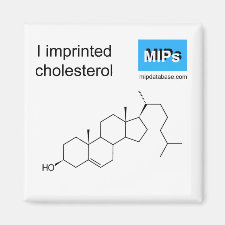
Authors: Fujiwara M, Nishiyama M, Yamamura I, Ohtsuki S, Nomura R
Article Title: A sol-gel method using acetic anhydride in the presence of cholesterol in organic solution media: Preparation of silicas that recognize steroid hormones.
Publication date: 2004
Journal: Analytical Chemistry
Volume: 76
Issue: (8)
Page numbers: 2374-2381.
DOI: 10.1021/ac035173w
Abstract: Silicas were prepared by a sol-gel method from tetraethoxysilane and acetic anhydride in the presence of cholesterol in organic solution media. Some silicas had higher pore volumes than silicas obtained in the absence of cholesterol. The adsorption abilities by these silicas were compared using various compounds in benzene solution. Although no clear difference among their adsorptions of cholesterol was observed, progesterone and other analogous steroid hormones were well adsorbed by silicas prepared in the presence of cholesterol, especially, prepared with n-heptane as an additional solvent. This silica adsorbed steroid hormones more selectively than other analogous compounds such as bisphenol A and hexestrol. On the other hand, a silica prepared by the usual aqueous sol-gel method with cholesterol had no clear adsorption selectivity to steroid hormones. Furthermore, no selective adsorption of steroid hormones was observed in the case of a common silica gel for column chromatography. This unique property of adsorption observed in silicas prepared using acetic anhydride in the presence of cholesterol is likely to be induced by the imprinting effect of the steroid skeleton part of cholesterol in silica matrix
Template and target information: cholesterol



Join the Society for Molecular Imprinting

New items RSS feed
Sign-up for e-mail updates:
Choose between receiving an occasional newsletter or more frequent e-mail alerts.
Click here to go to the sign-up page.
Is your name elemental or peptidic? Enter your name and find out by clicking either of the buttons below!
Other products you may like:
 MIPdatabase
MIPdatabase









